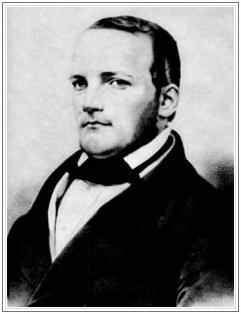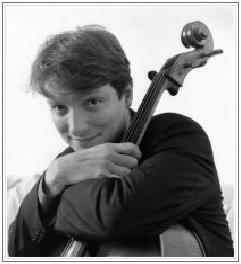Other Links
Editorial Board
- Editor - Bill Kenny
- Founder - Len Mullenger
Google Site Search
SEEN
AND HEARD INTERNATIONAL CONCERT REVIEW
Moniuszko, Offenbach, Franck:
Jérôme Pernoo (cello),
Bavarian State Orchestra, Marc Minkowski (conductor), National
Theater, Munich 21.4.2008 (JFL)
Marc Minkowski is not a conductor known for conventionalism, whether
it be his interpretations or the repertoire itself. Guest-conducting
the Bavarian State Orchestra (the opera’s orchestra) in its Fifth
Akademiekonzert of the 2007/2008 season, he underlined that
perception by opening with Stanislaw Moniuszko’s Halka
Overture, a lovely little, bubbly curtain raiser that whets the
appetite for more music of Poland’s largely forgotten ‘national
composer’. Then followed the whacky, oversized
cello concerto
of Jacques Offenbach.
The sounds convey one thing above all: someone who knew the cello,
its abilities and possible abuses, intimately wrote this to have all
the fun imaginable with the instrument. Jérôme Pernoo, the young
French cellist that Minkowski brought with him, succeeded in
conveying this impression not only about the composer (said to have
been the Franz Liszt of the cello), but also about himself.
Stanisław Moniuszko: ”Halka” Overture
Jacques Offenbach:
Cello Concerto ”Grand concerto militaire”
César Franck: Symphony in d-minor

Stanisław Moniuszko
Yes – Jacques Offenbach wrote a cello concerto, and it’s not just
the one-movement Concerto Militaire, seldom enough played in
its own right and actually the first movement of the Grand
Concerto. The concerto has been reconstructed from fragments
that have floated about since the 1940s, but the completion could
not take place until 2006 when Jean-Christophe Keck, the publisher
of the critical, complete Offenbach edition found Offenbach’s
handwritten score in the Library of Congress and an archive in
Cologne. Now we know that the Concerto rondo is the finale of
this Grand Concerto, and its nickname “militaire” makes more
sense than it did when it was applied to the rather un-martial
stand-alone first movement. That first movement opens gently, softly
with timpani touches. It quickly swells, hitting a sporting and gay
stride until the cello enters – solo – with a double-stop studded
opening statement and then giving away to something altogether more
hysterical.

Jérôme Pernoo
Given the sometimes ridiculous challenges that this work presents –
high register double stop-sequences especially – it wasn’t by means
of technical perfection that Pernoo achieved this, but through
buoyant joy, verve, and plenty spunk. Listening to him play this
concerto, one could not help but expect it to take cellists’
repertoires and concert halls by storm… despite its considerable
length (45 minutes) and the downright silly technical demands it
places on the soloist.
Generous and decidedly knowing applause after the first movement was
the just reward and about as high a praise a soloist can get
nowadays, when applauding between movements is usually scoffed upon
as boorish and ignorant. Indeed, my seat neighbors glared into the
program notes where three movements were indicated and muttered that
this errant applause was “not at all in accord with concert
etiquette”. Indeed it was not (as wasn’t the concerto itself) – and
thanks be for that.
Very little military attitude in the highly lyrical,
flute-twittering and cheery second movement Andante – the
only entirely new music in this work. The duo between cello
and first violin (Markus Wolf) must surely be among the most
immediately and widely pleasing moments in cello concerto history.
Between the artillery and infantry shots from the third movement’s
percussion ranks, the cello and the strings put down such an
infectious romp that a sort of Beer-hall joviality threatened to
erupt in the dignified surroundings of the Munich opera house.
Admittedly that might be over-interpreting the smiles and rhythmic
twitching of the audience – young and old in equal measure – but
does not
overstate the character of the music. The back and forth between
those percussion batteries and the soloist had – in the good sense –
moments of absolute hilarity, concluding with a particularly harsh
passage that leaves the cello – metaphorically – limping off stage. Chock
full of lust for composing and playing the cello, unbridled fantasy,
like an excited puppy blissfully running about the orchestral stage:
this concerto cares not about convention, only entertainment. Had a
composer of lesser stature than Offenbach attempted this, the result
might have been an embarrassing disaster. As it is, there are more
moments in this work that made me smile broadly than I can count. A
feat not possible had it not been for the willing and sympathetic
support from the Staatsorchester.
Pernoo clearly found his vehicle here – a thankful one for everyone,
though I suspect that for all its entertainment value also one
vulnerable to overexposure. Until then, though, there was and is no
reason not to join in the trampling, hollering, and incessant
applause that was the response at this performance. The Barcarolle
was promptly encored, with Pernoo as soloist extraordinaire.
The second half was given to César Franck’s Symphony in d-minor,
which made for interesting comparison with the performance of
Riccardo Muti.
Now conducting with a regular baton, not the thick, piano-lacquered
black wand from his collection of historical ‘instruments’,
Minkowski got a much more French sound than Muti from this utterly
un-French symphony which is organ-like as Bruckner’s symphonies are,
chromatically akin to Wagner-Liszt-Reger, and structurally more like
Brahms than anything else. Minkowski – throughout the evening – also
elicited an excellent, unusually deep and sonorous sound from the
orchestra which played with musicality and humanity that it never
reaches under Kent Nagano, whose cold musical
photorealism
is more akin to a Ron Kleeman or Ralph Goings paining than
organically unfolding, musical joy.
Jens F. Laurson
Back
to Top
Cumulative Index Page
